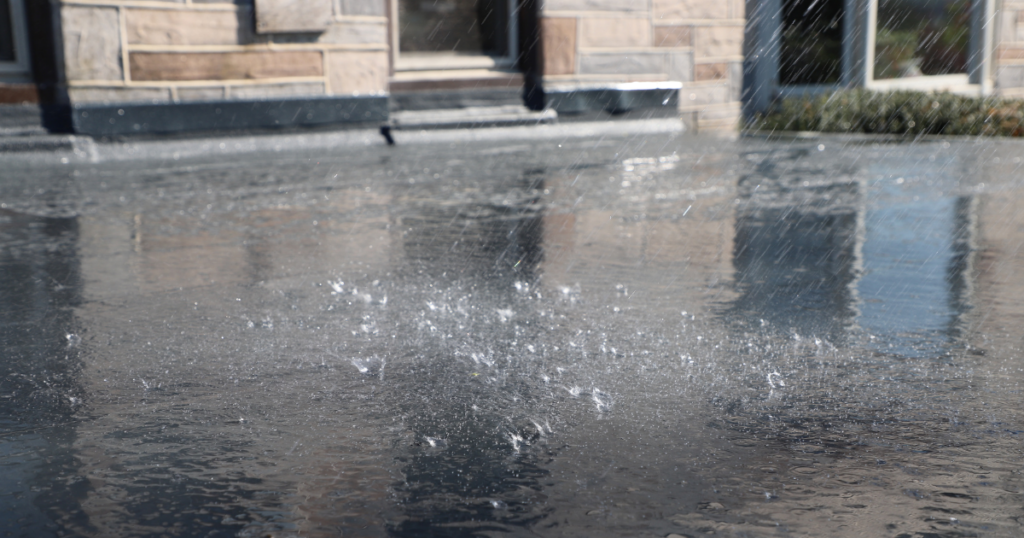25 September 2024
If you’ve ever worked with GRP roofing, you know it’s a great choice for durability and weatherproofing. But what happens when you’re mid-installation and the weather takes a sudden turn? Rain can complicate the process, but there are effective ways to manage it and ensure your GRP installation stays on track.
1. Cover Your Work – But Not with Tarps!
When it starts raining, your immediate reaction might be to cover the installation to prevent water damage. This is a good move, but avoid using tarpaulin as it can stick to the resin, causing more issues. Instead, use visqueen or polythene sheets. These materials won’t adhere to the resin, making them a perfect temporary shield.
Once you’ve covered the area, it’s best to stop working. Continuing to apply resin and fibreglass during the rain will likely waste time and materials, as they won’t adhere properly in wet conditions.
2. Resin Wash: An Alternative Solution
This technique involves adding a hardener to the resin and applying it to the decking with a soft roller. The resin wash will prevent water from being absorbed into the boards, allowing you to continue the fibreglass stage once the surface dries.
The beauty of the resin wash is that the water won’t penetrate the boards—it will just sit on the surface. Once dry, you can proceed as usual.
3. Don’t Worry, GRP is Reparable!
One of the greatest advantages of GRP roofing is its reparability. If rain does affect your work, rest assured that the damage can be fixed. Even if you need to come back later and patch or reapply areas, GRP is a forgiving material that allows for repairs without compromising the integrity of the roof.
Helpful Tips for Avoiding Rain-Related Issues:
- Check the weather forecast: It may seem obvious, but planning ahead is the best way to avoid rain disruptions. Try to schedule your installation during clear weather.
- Keep your materials protected: Store your matting, bandages, and other materials in bags to prevent moisture from affecting them. Also, make sure the lids on your resin cans are tightly sealed.
- Let water sit on uncured resin: Should it start raining whilst your resin is still uncured let the water sit on it and don’t roll it out. Once it has dried you can sand it down to level the surface out and proceed with the installation as usual. It is important not to roll uncured resin out whilst water sits on it as this can lead to water contamination.
- Watch for water contamination: If you notice white spots on the resin, it’s a clear sign of water contamination. This can affect the adhesion of your roofing components, leading to issues with waterproofing. If this happens, you’ll need to address the contamination before proceeding.
How Water Affects GRP Roofing:
- White spots on resin: This is a telltale sign that water has contaminated the resin. If left untreated, it can prevent the resin from properly bonding with the fibreglass, weakening the overall structure.
- Affects component adhesion: Water can interrupt the bond between the resin and the fibreglass matting, which is crucial for the roof’s strength and waterproofing capabilities.
- Not waterproof: If water seeps into the resin before it cures, your roof won’t be fully waterproof, defeating the purpose of the installation. Always ensure the resin has cured properly before exposure to rain.
In Summary:
Rain during a GRP roof installation doesn’t have to be a disaster. By using the right materials, like visqueen or polythene sheets, and knowing how to apply a resin wash, you can protect your work from water damage. Always remember to check the weather, keep your materials dry, and inspect your resin for signs of water contamination. And if something goes wrong? Don’t despair—GRP roofing is always reparable!

